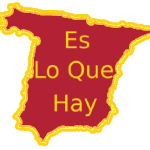Spain’s rich tapestry of history, culture, cuisine, and natural beauty make it a top tourist destination. From its bustling cities to quaint countryside villages and breathtaking coastlines, the diverse landscapes are best experienced at a leisurely pace. For many, this means exploring Spain on a moped or motor scooter. The freedom and convenience these vehicles offer have made them increasingly popular among both locals and tourists, with electric models gaining particular favor due to their eco-friendly nature.
However, the enjoyment of such travel is heavily dependent on being aware of and adhering to the local rules and regulations. Understanding Spain’s laws for operating mopeds and motor scooters can ensure a safe and legal ride, whether you’re a local resident or a tourist. This is particularly crucial as traffic regulations can vary considerably across countries, and what may be acceptable in one country could be illegal in another.
Laws and Regulations for Mopeds and Motor Scooters in Spain
Spain categorizes mopeds as two or three-wheeled vehicles with an engine capacity that doesn’t exceed 50cc. On the other hand, motor scooters often boast a larger engine size and can accommodate higher speeds. With a push towards sustainable transport, electric versions of these vehicles are becoming more common, providing an efficient and environmentally-friendly alternative for personal mobility.
Spain enforces strict laws and regulations regarding moped and motor scooter operation. Helmet use is non-negotiable for all riders and passengers, regardless of the vehicle type or the trip length. Speed limitations are also in place and vary based on the specific vehicle and the area of operation. For instance, while a motor scooter might be allowed to reach speeds of up to 45 km/h in certain areas, mopeds are typically restricted to lower speeds. Additionally, it’s important to note that driving mopeds and motor scooters on sidewalks is strictly prohibited. They should only be operated on the road, in designated bike lanes, or in spaces specifically marked for their use.
Licensing and Age Requirements
Acquiring the appropriate license is a crucial first step to legally operate a moped or motor scooter in Spain. If you’re planning to ride a moped, you must possess at least a ‘Licencia de Ciclomotor’ or a moped license. Alternatively, a standard car driving license (Class B) also permits moped operation. For motor scooters, the licensing requirements become more stringent and vary depending on the engine size. Motor scooters with an engine size exceeding 125cc, for example, require an A1 or A2 motorcycle license.
Age requirements for driving these vehicles in Spain are also clearly defined. You must be at least 15 years old to ride a moped. For motor scooters, the minimum age is generally 16, but this may vary depending on the vehicle’s power and engine size. It’s essential to verify these details before deciding to rent or purchase a scooter, especially for younger riders or tourists who may not be familiar with these regulations.
Special Considerations for Tourists
As a tourist, apart from the general rules, you need to pay attention to some additional aspects. First, you should have an International Driving Permit (IDP) along with your original driver’s license if you’re from outside the EU. Also, be aware that rental companies may have their own age and licensing requirements. Lastly, check local rules in the areas you plan to visit, as regulations can vary across regions.
Travel insurance that covers moped and scooter accidents is highly recommended. The medical costs of an accident can be high, and not all travel insurance policies include scooter accidents as standard. Therefore, make sure your policy covers you for this kind of incident before you hit the road.
Safety should be your top priority. Always wear a helmet, drive defensively, and follow all traffic laws. Keep in mind that Spanish cities can have heavy traffic, and local drivers may have different driving habits than what you’re accustomed to.
Special Considerations for Residents
For residents, the regulations are much the same, but you also need to consider vehicle registration, inspections, and taxes. If you buy a moped or motor scooter, you’ll need to register it with the local authorities and keep it in good condition to pass mandatory periodic inspections.
Purchasing a moped or motor scooter can be a great investment for a resident, considering the convenience and mobility they offer. But remember to research thoroughly before buying. Check the vehicle’s condition, necessary documents, and whether the model you’re considering is suited to your typical driving conditions.
Local traffic laws can heavily influence your experience of riding a moped or motor scooter. For example, some Spanish cities have low emission zones where high-polluting vehicles are restricted. Familiarize yourself with these rules to avoid fines and to contribute to a cleaner environment.
Penalties for Not Adhering to Laws and Regulations
Spain enforces strict penalties for traffic infractions. These can range from fines for minor offenses like parking violations to significant penalties for more serious infringements such as speeding, drunk driving, or riding without a helmet.
Repeat offenders may face harsher penalties, including larger fines, driving bans, and in severe cases, imprisonment. Therefore, it’s crucial to follow the rules at all times, not only for your safety but also to avoid legal troubles.
Frequently Asked Questions about Moped and Motor Scooter Use in Spain
In the unfortunate event of an accident, your first step should be to ensure the safety of all parties involved. Then, contact the local police to report the incident. If it’s a rental vehicle, inform the rental company as soon as possible. Make sure to keep a record of all details and paperwork related to the accident for insurance purposes.
Can you take a moped or motor scooter on public transport? The answer generally is no. Public transport systems typically do not allow full-sized mopeds or scooters onboard due to space and safety considerations. However, rules can vary, and in some cities, foldable or compact electric scooters may be allowed.
The regulations regarding electric mopeds and motor scooters are quite similar to their conventional counterparts. However, they are typically classified based on their maximum speed and power output. Also, note that while they are more eco-friendly, you still need to comply with all traffic rules and licensing requirements.
Conclusion
Understanding and respecting Spain’s laws and regulations for mopeds and motor scooters is paramount for a safe and enjoyable ride. Whether you’re a tourist exploring the beautiful country or a resident commuting daily, these rules ensure that everyone shares the road safely and responsibly.
Spain offers a wealth of sights and experiences, and travelling by moped or motor scooter can provide a unique perspective. So buckle up your helmet, rev up that engine (or turn on that electric motor), and immerse yourself in the Spanish adventure – safely and lawfully!
References and Further Resources
To get the most accurate and up-to-date information on Spain’s moped and motor scooter laws, check official sources such as Spain’s Directorate-General for Traffic (DGT) or your local embassy’s website.
Additional resources like local motor clubs, driving schools, and scooter rental agencies can also provide helpful insights and practical advice to ensure that your moped or scooter experience in Spain is safe, legal, and most importantly, fun!




